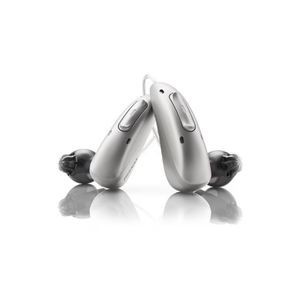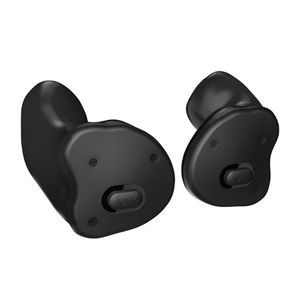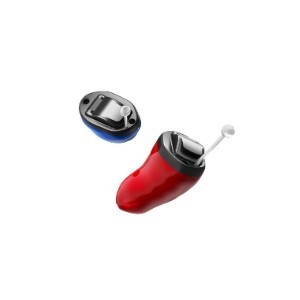
Last Hearing Aid UK Update: 05/01/2026
Best Bluetooth Hearing Aids
What are Bluetooth hearing aids, and how do they work?
Bluetooth hearing aids are a type of advanced digital hearing aid that allows you to wirelessly connect to everyday devices like smartphones, TVs, and laptops.
These innovative hearing solutions help you stay connected, stream audio, and take calls with ease, making Bluetooth hearing aids an increasingly popular choice in the UK.
This allows device wearers to stream audio directly to their hearing aids, as well as control them using their mobile app or remote control accessory.
But why are Bluetooth hearing aids beneficial? How do they work, and how do they help you stay connected?
This page goes through all the basics you need to know about Bluetooth hearing aids and how they can help your hearing.

Who should consider Bluetooth hearing aids?
Bluetooth hearing aids are particularly beneficial if you:
- Make regular phone calls and want hands-free convenience
- Watch television and struggle to hear dialogue clearly
- Listen to music, podcasts, or audiobooks on your smartphone
- Attend video calls for work or keep in touch with family
- Use GPS navigation whilst driving - Want discreet control of your hearing aids without touching them
- Lead an active lifestyle with varied listening environments
Conversely, if you rarely use smartphones, don't stream media, and primarily need amplification for face-to-face conversations, you might not need to pay extra for Bluetooth hearing aid technology.
One of our audiologists can help you decide whether Bluetooth features justify the investment for your specific situation.

Quick benefits of Bluetooth-enabled hearing aids
These are some of the main advantages of using Bluetooth hearing aids, including improved sound quality, convenience, and enhanced user experience.
Watching TV
You can stream TV audio directly to your hearing aids via Bluetooth.
Chatting on the phone
Enjoy stress-free phone calls with direct audio streamed to your hearing aids with Bluetooth.
Listening to music
Stream your favourite music directly to your hearing aids without the need for headphones.
Bluetooth hearing aids, how do they work?
In short, they are wireless communication systems between devices. Bluetooth hearing aids transmit radio waves through high-frequency channels to connect to another source.
They are paired with each other to communicate data safely by changing frequency continuously, thousands of times per second.
This clever ‘wireless radio’ technology was developed in 1994.
Providing the market with two or more electronic devices that were able to switch data between each other wirelessly, using radio waves.
All Bluetooth hearing aids now have a hearing aid app that you can download onto your mobile.
Giving you access to discreet adjustments on the go, whenever you need to. Your audiologist can also tap into your app and make professional adjustments remotely.
We have over 200 audiologists nationwide and can find an audiologist in your area to assist you with hearing aids and hearing healthcare treatment plans.
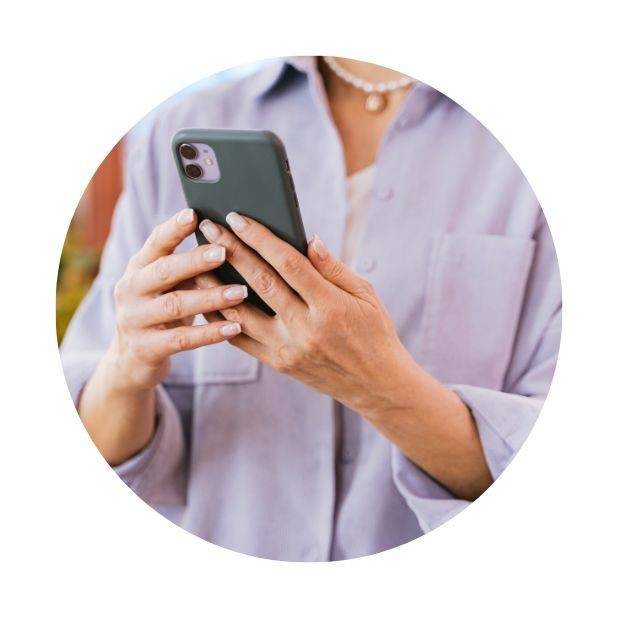
Bluetooth hearing aids keep you connected
Hearing aids with Bluetooth connectivity enhance your everyday life and keep you connected to both iOS and Android phones, as well as other wireless devices.
You can also connect Bluetooth hearing aids to TV systems and other devices in your own home.
Historically, hearing aids held limitations for hearing aid wearers in regard to accessing audio devices like mobile phones. You can imagine this was quite frustrating.
For example, if they wanted to jog and listen to music at the same time, they would have to remove their hearing aids and switch to headphones.
Bluetooth hearing aids have come a long way, and modern hearing aids are so much better, accommodating both connections to audio devices and streaming sound straight to your hearing aids.
There are different types of Bluetooth hearing aids
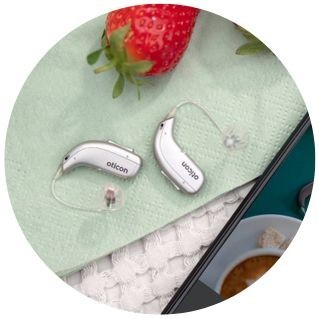
Are Bluetooth hearing aids right for me?
Bluetooth hearing aid features
Are Bluetooth hearing aids worth it?
Here, we explore the various features of Bluetooth hearing aids, such as connectivity options, streaming capabilities, and compatibility with different devices. Hopefully, this section should answer the question: "Do I really need Bluetooth hearing aid technology?"
Today's Bluetooth hearing aids cater to all types and levels of hearing loss from mild to severe. They are extremely convenient for those who use Bluetooth-enabled devices like tablets, iPads, TVs, and smartphones.
Using such Bluetooth technology will allow your hearing aids to enhance your everyday life, making it easier while giving you more control and more freedom.
But will you use the technology? Bluetooth hearing aids connect you to your friends, loved ones, and the world seamlessly. However, if you do not use Bluetooth devices and have a standard smartphone, you may not get the most out of Bluetooth hearing aids.
Your audiologist will go through what you want from your hearing aids, what your hearing loss needs, and also what would enhance your current lifestyle.
It is also important that you discuss what Bluetooth-enabled devices you already have that you'd like to connect with your hearing aids, and whether the technology is compatible.
The smart technology of Bluetooth hearing aids
Historically, the concept of Bluetooth hearing aids described only the devices that have a direct connection to a mobile phone to enable audio streaming. In short, when the industry spoke about Bluetooth hearing aids, they were referring to Made for iPhone hearing aids (also known as MFI).
The Made for iPhone hearing aids came onto the market with Resound’s LiNX platform in 2014 – their first iPhone device. This was then quickly mirrored by Starkey’s Halo hearing aids, and now the industry has seen a sea of change with manufacturers adding to their Bluetooth hearing aid ranges.
What if my hearing aids can't connect?
If your hearing aids don't incorporate direct streaming, don't worry, there are plenty of hearing aid streamers on the market that connect you.
Pretty much all the hearing aid manufacturers have Bluetooth-compatible hearing aid streamers. It ensures fast, low-energy, and reliable wireless audio streaming directly to your hearing aids.
What are Bluetooth hearing aid streamers? Streamers are effectively the 'go-between' between your hearing aids and your electronic device.
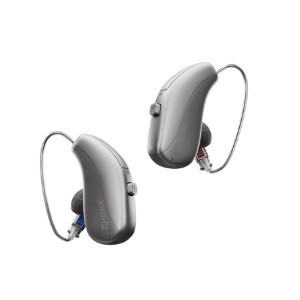
How Bluetooth hearing aids improve daily life
Real-world scenarios
Beyond the technical specifications
Here's what Bluetooth hearing aids actually mean for your everyday experiences:
At the supermarket checkout: Your phone rings whilst you're packing shopping - answer it with a tap on your hearing aid rather than fumbling for your mobile.
During family video calls: Stream your grandchildren's voices directly into both hearing aids with crystal-clear quality, without asking them to repeat themselves.
On your morning walk: Listen to your favourite podcast whilst remaining aware of traffic and cyclists approaching from behind.
Cooking dinner: Follow along with a recipe video streaming to your Bluetooth hearing aids whilst keeping your hands free for chopping and stirring.
At the cinema: Connect to venues with Auracast technology (coming soon) to hear films at your preferred volume without disturbing others.
In the car: Navigate using GPS directions streamed directly to your Bluetooth hearing aids without missing crucial turning instructions. These aren't just nice-to-have features - they're genuine quality-of-life improvements that help you stay connected and independent.
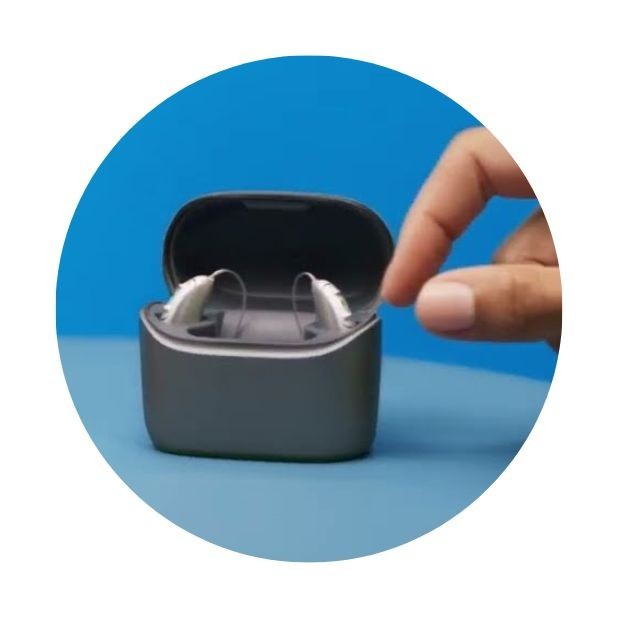
Bluetooth Hearing Aids For Any Phone
Made for Any Phone Hearing Aids
Truly Made for any Phone Bluetooth hearing aids are only available from the Sonova Group, which brought you Phonak, Unitron, and Audio Nova.
Offering you the flexibility of having connectivity to any smartphone or mobile phone, whether it's an iPhone or an Android, with Bluetooth capabilities.
This is for audio and call streaming (and pretty much any electronic device with Bluetooth).
MFA hearing aids offer advanced sound processing, improved speech clarity, noise reduction, adaptive features, and enhanced comfort.
Providing users with a customised hearing experience for better overall listening in various environments.
Bluetooth Hearing Aids iPhone
Made for iPhone Hearing Aids
Bluetooth hearing aids for iPhones are also acknowledged as both MFI and Made for iPhone hearing aids, which basically means a technology that can be paired with iPhones, iPads, and iPods.
It is an Apple-specific licensed product that includes a variety of devices to connect and integrate.
You might want to consider a rechargeable option if you are buying Bluetooth hearing aids compatible with an iPhone.
This means you are able to take full advantage of the direct Bluetooth hearing aids streaming capabilities.
They enhance sound quality, offer seamless connectivity, allow personalised settings, support phone calls and media streaming, improve communication, and provide convenience through app controls for better hearing experiences.
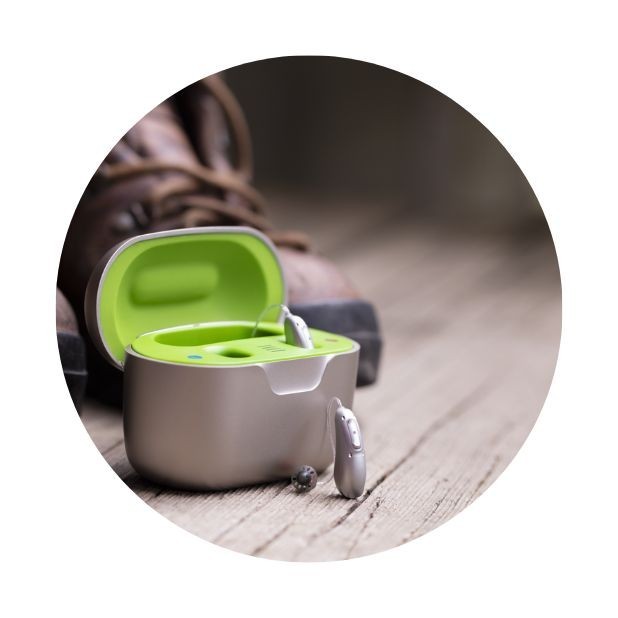
Bluetooth Hearing Aids Android
Made for Android Hearing Aids
Before Android 10, Android developers were having a bit of a problem. They hadn't invested enough time to research, develop, and launch hearing aid integration.
Android displayed similar features to those of the Made for iPhone hearing aids, but had always needed a streamer, whilst Apple was a direct connection. All that has changed.
Over the last few years, Google has been dedicated to making Bluetooth hearing aids for Android phones more accessible to the hearing-impaired.
The company launched an app called Sound Amplifier, turning your Android smartphone into a hearing aid.
They provide seamless connectivity, direct streaming of calls and media, customisable sound settings, enhanced speech clarity, noise reduction, and easy control through compatible apps for a tailored listening experience.
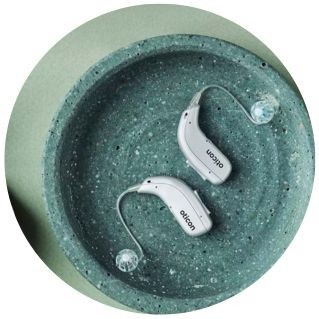
Top-Rated Bluetooth Hearing Aids in the UK
Are Bluetooth hearing aids any good?
Bluetooth development has been a challenge
Even though hearing aid manufacturers saw huge potential and benefits to Bluetooth hearing aid technology over the years, the development hasn’t been plain sailing.
Originally, the transferred audio wasn’t of great quality and relied on huge amounts of power. Due to this, most brands opted to design streamers to bridge the gap between connectivity and sound quality – a middleman of sorts.
Ultimately, this resulted in both launching the first-ever Made for iPhone hearing aids with a direct connection. Allowing you to access the world through your hearing aids using mobile phone features and apps.
All hearing aid manufacturers now have Made for iPhone Bluetooth hearing aid models on offer, but it is worthwhile knowing that you may need a connective device – a streamer - for some models for hearing aid mobile phone compatibility.
What do we think of Bluetooth hearing aids?
Are there advantages to Bluetooth hearing aids? Most consumers and audiologists would say they were better, even though the Bluetooth hearing aid connectivity doesn’t ensure better-performing hearing aids.
One of the main benefits of Bluetooth hearing aids is their ability to connect to a wide range of devices, including phones, TVs, and music players.
This allows users to stream audio directly to their hearing aids, which can be especially useful for people who have difficulty hearing in noisy environments or who have difficulty understanding speech.
Another benefit of Bluetooth hearing aids is their ability to be controlled remotely. Many Bluetooth hearing aids come with a remote control or app that allows users to adjust the volume, switch between listening programs, and control other features.
This can be especially convenient for people who have difficulty manipulating small buttons or who have dexterity issues.
Bluetooth hearing aids also offer several other benefits. For example, many models come with noise reduction and feedback reduction technologies, which can help to improve the overall listening experience.
They may also come with directional microphones, which can help to improve speech understanding in noisy environments.
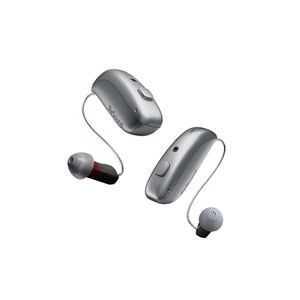
Common Bluetooth Hearing Aid Connection Issues
(and how to solve them)
Bluetooth hearing aid technology has improved dramatically
However, you might occasionally encounter these situations:
- Connection drops during phone calls: Usually resolved by ensuring your smartphone is within recommended range (typically 3-10 metres depending on the model) and isn't obstructed by walls or your body
- Audio delay when watching TV: Some Bluetooth hearing aids have a slight lag between video and audio. TV streamers specifically designed for hearing aids eliminate this issue
- Difficulty pairing with new devices: Most Bluetooth hearing aids can only pair with a limited number of devices (typically 8-10). You may need to "forget" unused devices to add new ones
- Battery drains quickly with Bluetooth: Streaming audio uses significantly more power than regular hearing aid use. If you stream for several hours daily, consider models with longer battery life or keep a portable charger handy
- One hearing aid connects, but the other doesn't: This usually indicates the hearing aids need re-pairing with each other first, then with your device. Your audiologist can walk you through this process
Your audiologist can troubleshoot these issues during follow-up appointments, and most modern Bluetooth hearing aids include detailed pairing instructions in their accompanying apps.
Did you know that we offer free home visits?
Wherever you live, we have between 2 and 3 audiologists in your area who can support your hearing healthcare locally. You can book an appointment to see them in one of our clinics or in the comfort of your own home, at a time that suits you.
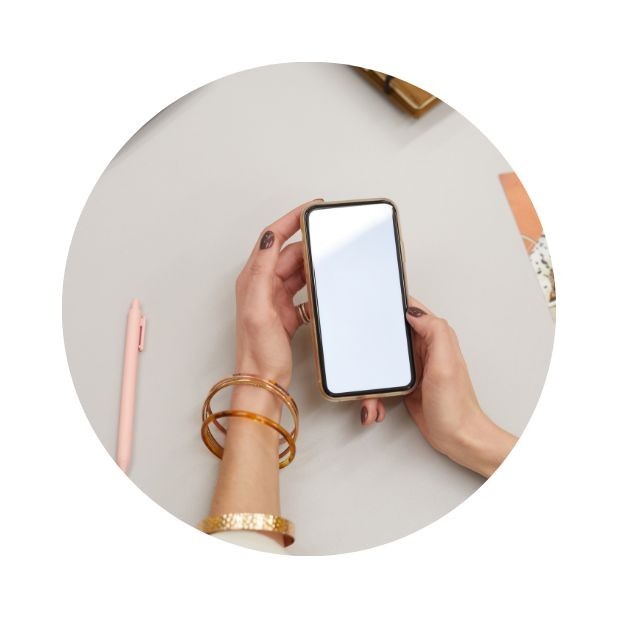
Bluetooth Industry Terms for Hearing Aids
Made for iPhone hearing aids (MFI)
These connect directly to iPhones without an additional streamer for streaming calls and audio.
MFI hearing aid devices don’t always connect to Android phones and might need a streamer to be successful.
Made for Android hearing aids or Made for Any Phone (MFA)
These, in the past, still needed an additional streamer, but since Android 10, the future of direct connection has become brighter.
These now connect to any mobile phone with Bluetooth capabilities and pretty much any Bluetooth device.

Bluetooth hearing aid streamers
It is important to bear in mind that whilst some Bluetooth hearing aids are Made for iPhones, they may still need a streamer to benefit from the wireless technology.
This would be an additional cost that is usually between £200 to £500, depending on the brand and device needed.
Your audiologist will discuss all the options available to you. If a streamer is needed, you can also purchase one directly from them.
Bluetooth-compatible hearing aids
These are not directly connected and need a streamer to connect to a mobile phone and to stream audio (using an app).
They do connect to Android devices the same way once you have said streamer in place.

Bluetooth Hearing Aids Costs
How much are Bluetooth hearing aids in the UK?
With the introduction of Bluetooth 4.0, this innovation, as well as the rise of lithium-ion rechargeable batteries, means Bluetooth hearing aids are now widely available.
They have become rather mainstream and, therefore, result in many Bluetooth hearing aid prices being no more expensive than those that don't have this technology.
The average cost of Bluetooth hearing aids now starts from £795 - £1895 per aid.
You might have visited a high street hearing aid retailer and been quoted a high price for hearing aids.
We recommend you compare our prices, which are published for all to see. In most cases, we are around 40% off the high street prices.
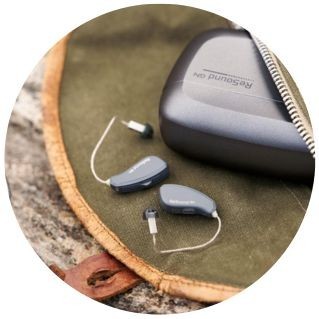
Best Bluetooth Hearing Aids for Streaming, Calls & More
Advantages of Bluetooth hearing aids
Bluetooth hearing aid benefits
Even if you need an additional hearing aid streamer to benefit from wireless connectivity and functions, Bluetooth hearing aids offer a plethora of advantages to hearing aid wearers. Here are our audiologists' top four below.
1. Bluetooth hearing aids give you better control
You can control sound more easily with Bluetooth hearing aids, as sound can be adjusted remotely through your smartphone or using a streamer. This means you will have full control and management of your hearing aids at your fingertips.
This is a huge benefit to those who wear discreet hearing aids and cannot gain access to any external controls to make adjustments.
2. You get a more tailored listening experience with Bluetooth hearing aids
You can stream sound directly to both hearing aids with Bluetooth hearing aids. For example, when you are on the phone, you can stream sound into just one hearing aid device so you can continue to hear your surrounding sounds.
Alternatively, you can stream music into both hearing aids, as you would with headphones. This benefits you because you will always have a natural and realistic listening experience.
3. There is better localisation with Bluetooth hearing aids
Because Bluetooth hearing aids work in sync using binaural hearing technology, they mimic the natural localisation of both your own ears. This benefits you because it makes it easier to know where the sound is coming from.
Hearing aids without Bluetooth usually process sound separately, which can sometimes make figuring out the direction of sound more challenging.
4. Bluetooth hearing aids allow for multiple connectivity
Hearing aid streamers can often be connected to several Bluetooth-enabled devices, which makes it a lot easier to switch between them and the sounds you want to be streamed into your hearing aids.
What to ask your audiologist regarding Bluetooth hearing aids
Before you consider purchasing your Bluetooth hearing aids, reflect on your needs and priorities, as well as discuss your queries, anxieties, and expectations with your audiologist.
At the end of the day, you mustn't be paying for what you ultimately don't need.
Here is our consumer tick list for those who are thinking about upgrading or purchasing Bluetooth hearing aids, and some questions you might want to ask your audiologist:
- iPhone Streaming: Do the hearing aids stream audio from iOS devices?
- Android Streaming: Do the hearing aids stream audio from Android phones?
- Laptop Streaming: Do the hearing aids stream audio from laptops and other Bluetooth hearing aid devices?
- Accessories: Do I need to purchase accessories to stream audio from various devices or to have hands-free calls with these hearing aids?
- Connectivity: Do the hearing aids provide reliable connectivity with numerous devices, and is it easy to install? How many Bluetooth devices can you connect to at the same time?

Best Bluetooth Hearing Aids UK of 2026
Our top 3 Bluetooth hearing aids recommended by our audiologists
What are the best Bluetooth hearing aids?
With less stigma, better audio technology, and advanced Bluetooth hearing aid technology and features, it is now a great time to trial hearing solutions and experience the benefits they bring.
How do we choose the best Bluetooth hearing aids? Finding the right Bluetooth hearing aids for you will depend entirely on your unique preferences, hearing loss needs, budget, and what you typically want from your hearing aids. In so many ways, there is no one-size-fits-all answer here.
However, to help you find the best Bluetooth hearing aids on the market, we have consulted a panel of two of our audiologists to provide recommendations based on their own experiences and expertise.
Our Bluetooth hearing aids reviews are based on brand reputation, customer reviews of the product, and our audiologist's experience.
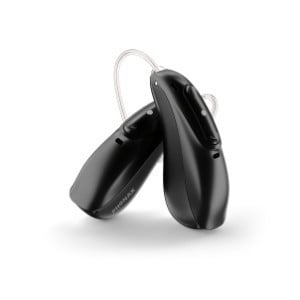
Winner
Phonak Audeo Infinio Ultra Sphere i90 Bluetooth Hearing Aids
Why buy?
The Phonak Audeo Infinio Ultra Sphere i90 hearing aids are an advanced solution for those seeking seamless connectivity and great sound quality. These devices leverage advanced Bluetooth technology to directly stream audio from smartphones, tablets, and TVs.
This means you can enjoy crystal-clear phone calls, immersive music, and clear TV dialogue, all without the need for additional accessories.
Phonak has also long been known for its robust connectivity, offering classic Bluetooth to pair with a variety of devices like smartphones, tablets, and computers. Their unique dual streaming capability allows you to connect to two devices simultaneously, a feature unmatched by other hearing aid brands.
The Infinio Ultra Sphere i90 takes connectivity to the next level. Hands-free calling is now supported, and the transmission power has been significantly improved, ensuring a more stable connection over longer distances.
This enhanced connectivity translates to superior audio quality and smoother transitions between different audio sources.
With the introduction of LE Audio, Phonak's hearing aids are Auracast-ready, future-proofing your device. While Auracast transmitters are still pending and this feature is not currently activated, it is expected to be available via a free firmware update from your audiologist in the coming years.
Second Place
Signia Insio Charge&Go 7IX Discreet Bluetooth Hearing Aids
Why buy?
A small, discreet rechargeable custom In-Ear offering with the innovative IX platform technology. This In-Ear rechargeable hearing aid brings optimum hearing technology and discretion that is custom-made for extra comfort every day.
Custom-made means that the hearing aid itself is adapted to fit your unique ear shape or 'ear anatomy', so it is even more discreet.
The Insio offers state-of-the-art Bluetooth connectivity to both iPhone and Android devices to stream calls, music, and TV audio directly to your devices. You can also enjoy the benefits of connecting to the Signia app and Signia Assistant for further personalisation.
The Signia Insio 7IX incorporates the successful Integrated Xperience platform, giving you a reduction in hearing effort and clear speech in conversation, even on the go and in any hearing situation.
All in all, this device achieves a great balance of sound quality for wearers with mild to moderate hearing loss who want great Bluetooth features from an In-Ear aid.
Runner Up
Oticon Intent 1 Bluetooth Hearing Aids
Why buy?
A popular Bluetooth hearing aid with AI-powered natural sound. This Oticon hearing aid is a discreet rechargeable style with technology for you to gain from all relevant sounds and supports how your brain works naturally.
Advancing on their already successful BrainHearing technology philosophy and combining the Deep Neural Network and the new Solaris platform.
This means you will benefit from more of the meaningful sounds around you, more balance and clarity of all the little details, and more captures of the special moments that sound brings to life.
When it comes to connectivity, Intent ticks all the boxes. You can connect to the full range of Oticon accessories, and they perform really well with most mobile phones.
Oticon has also stated that the Intent will work with the new Bluetooth protocol, LE Audio, and Auracast, which will effectively be the new generation of reliable audio streaming.
In fact, Oticon Intent 1 mirrors a lot of the benefits found in Audeo Lumity at a similar price. One of the differences is how these two products deal with background noise.
Whilst Intent uses a more natural open sound portrayed in 360 degrees that mirrors the way our brain naturally hears (this is where the AI comes in), Lumity focuses more on speech to reduce the effect of background noise.
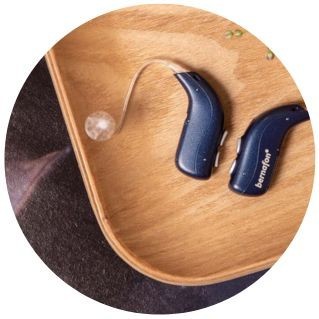
Digital Bluetooth Hearing Aids
Future Bluetooth technology
Auracast Bluetooth for hearing aids
Auracast Bluetooth technology will be integrated into hearing aids, revolutionising auditory assistance. With its advanced connectivity, Auracast enables direct streaming of phone calls, music, and other audio content from smartphones and compatible devices.
This innovation enhances the hearing aid user experience, providing crystal-clear sound quality and eliminating background noise.
Auracast's low-energy consumption also helps to prolong battery life, ensuring extended usage without interruption. Its user-friendly interface simplifies device pairing and customisation, supporting hearing personalisation.
Auracast Bluetooth technology will roll out within the next six or so years in hearing aids, representing a significant leap forward, offering enhanced accessibility and improved quality of life for those with hearing loss.
Summary
Bluetooth hearing aids connect wirelessly to smartphones, TVs, and other devices, allowing users to stream audio, take calls, and control settings via an app or remote. This technology enhances sound quality, convenience, and accessibility for people with hearing loss.
There are different types—Made for iPhone, Made for Android, and Made for Any Phone—offering varying levels of direct connectivity. Some models require additional streamers, while many newer devices now support hands-free use and app control.
Bluetooth aids are especially useful for tech-savvy users and can improve experiences like phone conversations, music listening, and watching TV. Prices start around £795 per aid, and top-rated models include devices from Phonak, Signia, and Oticon.
If you regularly use Bluetooth-enabled devices, these hearing aids can significantly improve your daily life. However, users who don’t need wireless streaming may not benefit from the added cost or features.
Other useful information on Bluetooth hearing aids
Need more support with the best Bluetooth hearing aids?
You might be new to hearing aids, or you might be thinking about upgrading and wondering which device would be right for you, or you simply might want more information on Bluetooth hearing aids on the market.
If you are considering this type of hearing aid, it's a good idea to speak with an audiologist to determine the best option for your specific needs.
Call us free on 0800 567 7621 and one of our experts will be happy to advise you. Or click on the button below to discover more about the different types of Bluetooth hearing aids.
Our specialist service includes:
Do not spend hundreds of pounds without getting a second opinion from us.
Please call us on 0800 567 7621
 Not only are the prices great, but the service is fantastic! Many thanks to your team.
Not only are the prices great, but the service is fantastic! Many thanks to your team.Watch Oticon's video below about their Bluetooth hearing aids and connectivity
What's included in our hearing aid prices?
Common questions about Bluetooth hearing aids
Hearing aid apps generally connect directly to various smart devices using Bluetooth, so wearers can control their hearing aid features and settings like programs and volume. Program management is a great tool, as you can use a range of feature sets in different environments to help you hear better. For instance, hearing speech clearly whilst walking in the park with a friend.
Can I connect my Bluetooth hearing aids to my TV?
By using a TV Adapter you can sit back and enjoy your favourite programmes with audio straight to your Bluetooth hearing aids. You can control the volume of your TV, balance environmental sounds, and easily switch between multiple Bluetooth-enabled devices.
Where can I purchase Bluetooth hearing aids? Can I buy them online?
In reality, you probably won't be able to purchase Bluetooth hearing aids online. There are some cheaper and less reliable OTC devices available, but most hearing aid brands do not operate like this. You will need to visit your local audiologist to access this type of hearing aid.
Are Bluetooth hearing aids safe?
Are Bluetooth hearing aids bad for you? Bluetooth hearing aids are considered safe for use by regulatory agencies. Bluetooth technology uses low levels of radio frequency (RF) radiation to transmit data wirelessly between devices.
Bluetooth hearing aids and flying - is it safe?
Yes, flying with Bluetooth hearing aids is safe. Bluetooth technology uses radio waves to transmit data, which is not affected by changes in altitude. Therefore, it is safe to use Bluetooth hearing aids on an airplane.
Bluetooth hearing aids and pacemakers - are they safe?
Generally, it is safe to use a pacemaker and Bluetooth hearing aids together, but it is important to take certain precautions to ensure their safe use.
Overall, as long as you take these precautions and follow the advice of your healthcare provider, it should be safe to use both a pacemaker and Bluetooth hearing aids.
How do Bluetooth hearing aids connect to TV?
What about Bluetooth hearing aids and TV? With hearing aid TV Adapters you can sit back and enjoy your favourite programmes. Most hearing aid brands also have hearing aid apps that can give you extra convenience when used together with a TV Adapter. Such as:
- Control the volume of your TV.
- Balance environmental sound.
- Easily switch between multiple
- Bluetooth-enabled devices.
NHS Bluetooth hearing aids: Can you get Bluetooth hearing aids on the NHS?
Are Bluetooth hearing aids available on the NHS? The NHS is now able to offer Bluetooth hearing aids. However, the decision does lie with your local GP or NHS Trust to ultimately decide whether you need them or not along with why you feel like you could benefit from them. However, like with all NHS hearing aids - the choice and technology will be limited.
Other Bluetooth hearing aid pages you might like...
Ask the Experts
6 Morton Lane
Walkwood
Redditch
Worcestershire
B97 5QA
Latest Launch
When we refer to a product as 'Latest Launch', we mean it is the latest to be released on the market.
New
When we refer to a product as 'New', we mean that the product is the newest hearing aid model on the market.
When we refer to a product as 'Superseded', we mean that there is a newer range available which replaces and improves on this product.
Older Model
When we refer to a product as an 'Older Model', we mean that it is has been superseded by at least two more recent hearing aid ranges.

